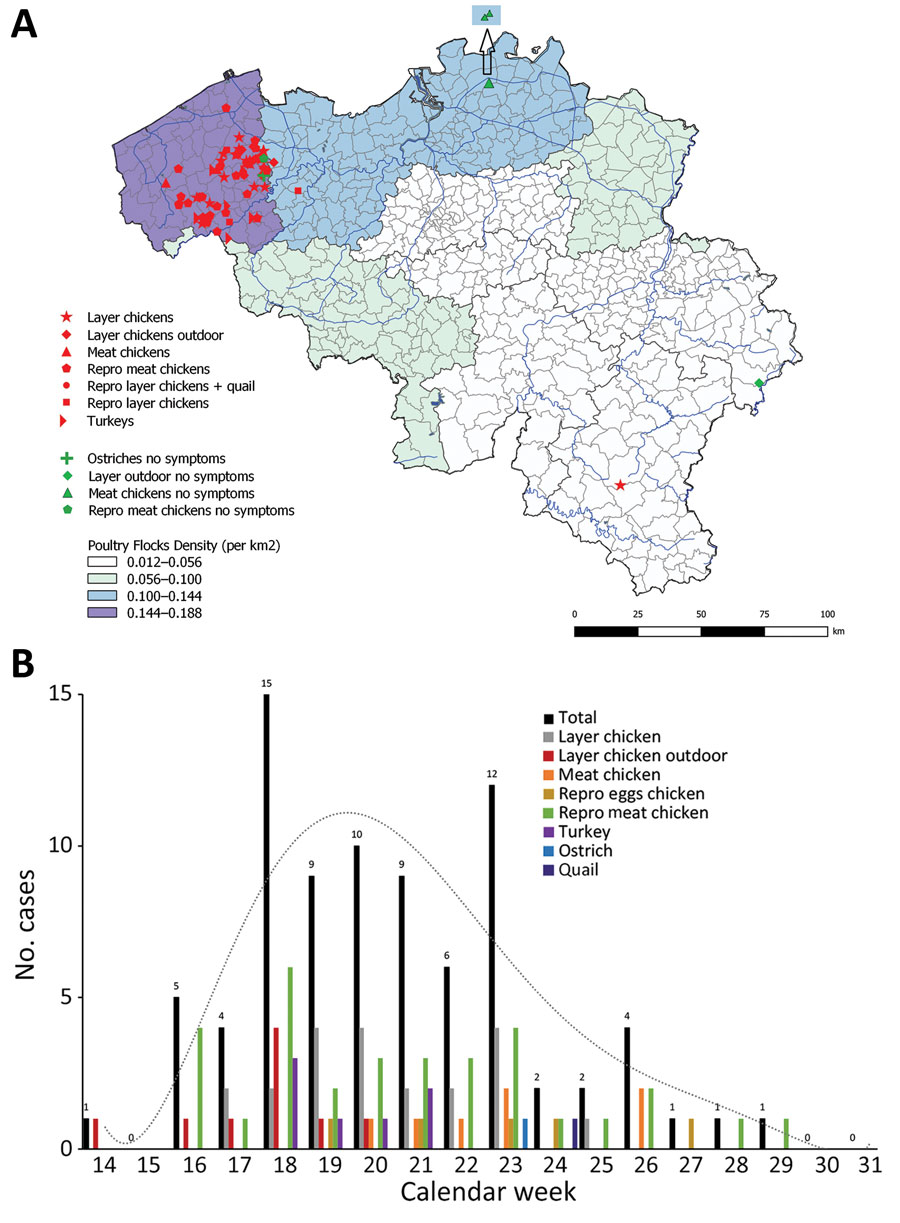Volume 26, Number 8—August 2020
Dispatch
Atypical Pathogenicity of Avian Influenza (H3N1) Virus Involved in Outbreak, Belgium, 2019
Figure 2

Figure 2. Viral presence in birds during experimental infection with avian influenza (H3N1) isolated from poultry in Belgium, 2019. The individual excretion values are shown (different patterns in circles and diamonds correspond to individual birds) in addition to the average group value ± SDs (error bars). Asterisks (*) indicate statistically relevant differences between time points, groups, or organs, p<0.05. Note: for diluted viral isolates the correspondence between log10 (no. copies/mL) and log10 (50% egg infectious dose/mL) is a difference of ≈1 log less in egg infectious dose. The exact link (by determining the titer of infectious virus in the samples) was considered beyond the scope of this article. A) Viral RNA excretion of infected and sentinel birds at different points after infection, by respiratory gastrointestinal tract samples. B) Viral presence in the organs of infected and sentinel birds at time of death or the end of the experiment (21 dpi), determined by real-time reverse transcription PCR. Viral RNA excretion or presence is expressed as the logarithm of the number of viral RNA copies/mL as quantification was performed relative to an external curve during real-time reverse transcription PCR analysis. CLS, cloacal samples; dpi, days postinfection; repro, reproduction; TRS, oropharyngeal swab samples.